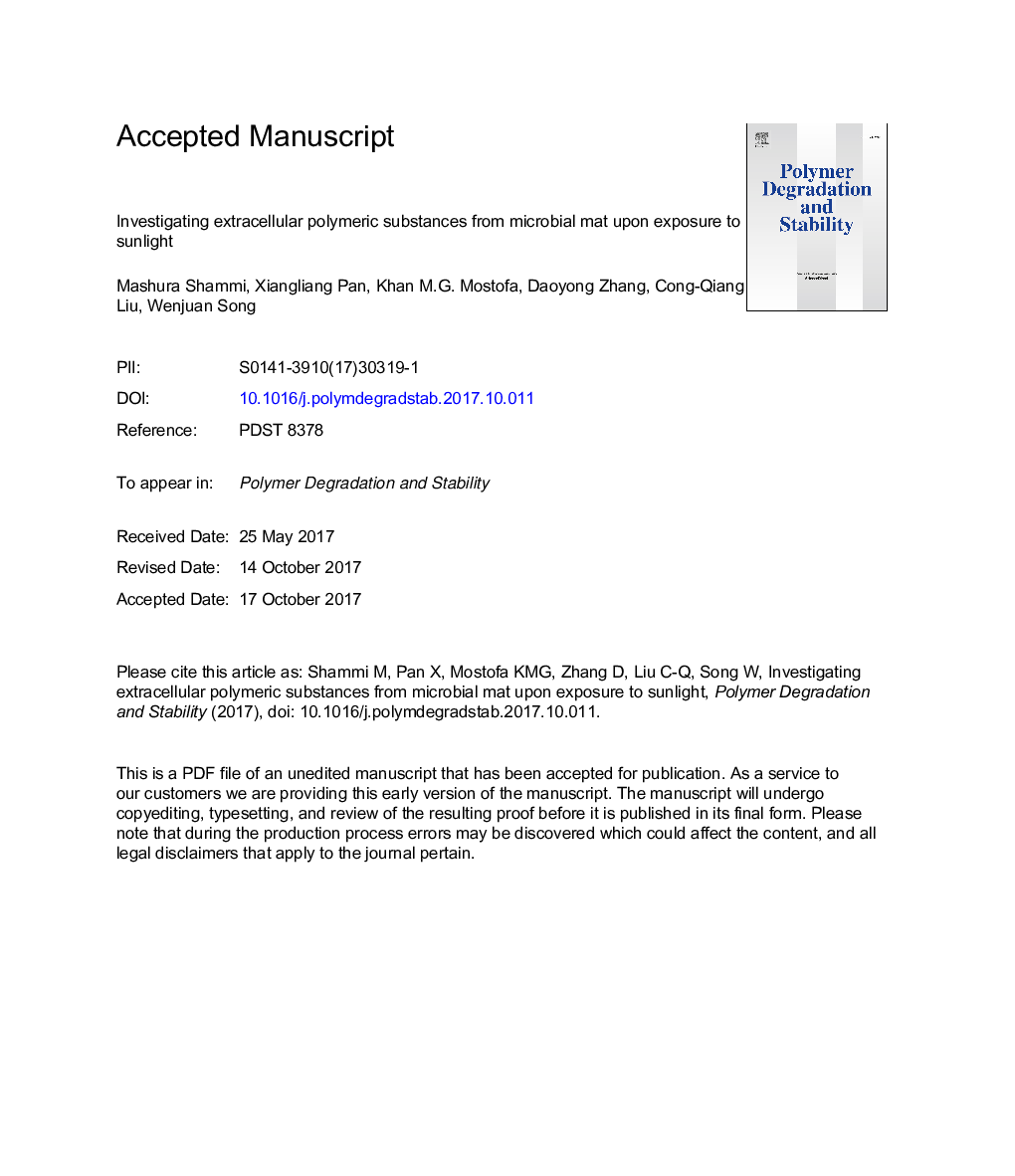| Article ID | Journal | Published Year | Pages | File Type |
|---|---|---|---|---|
| 7824237 | Polymer Degradation and Stability | 2017 | 39 Pages |
Abstract
Microbial mat extracellular polymeric substances (EPS) and their fate and transformation in natural waters are unidentified under diurnal condition. EPS from highly saline arid origins were characterised and exposed to natural sunlight conditions to identify its physico-chemical changes over 72Â h. Fourier Transform Infrared Spectroscopy (FTIR) and potentiometric titration analyses confirmed the presence of âCOOH and -OH functional groups in raw EPS. In addition, size exclusion chromatography (SEC) confirmed the presence of two proteins-sized molecules in the original EPS which were found to degrade upon sunlight exposure. The excitation-emission matrix (EEM) and parallel factor (EEM-PARAFAC) identified two fluorescent components: A combined humic-like and protein-like component, and an individual tyrosine-like component. FTIR in irradiated samples confirmed degradation of EPS by showing presence of the âCH3 group at 1377Â cmâ1. Two proteins-sized molecules identified in SEC were degraded, thereby causing to significant changes in the pH and redox potential (Eh). Correspondingly, three fluorescent components were identified in irradiated samples using EEM-PARAFAC modelling and found to change in their fluorescence intensities upon sunlight exposure. It is therefore suggested that photochemical processes are important for sequential transformation of EPS into various organic substances in surface waters.
Keywords
Related Topics
Physical Sciences and Engineering
Chemistry
Organic Chemistry
Authors
Mashura Shammi, Xiangliang Pan, Khan M.G. Mostofa, Daoyong Zhang, Cong-Qiang Liu, Wenjuan Song,
